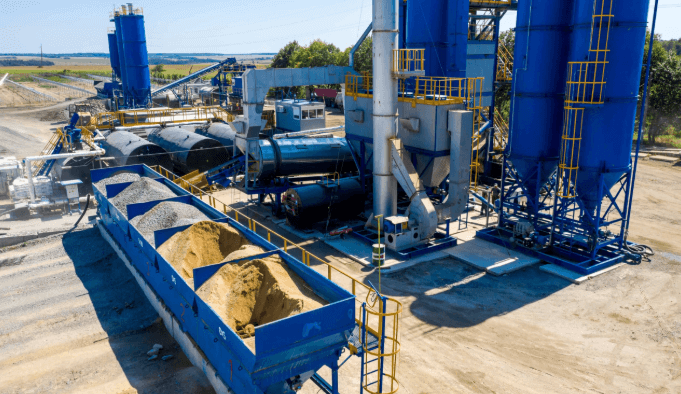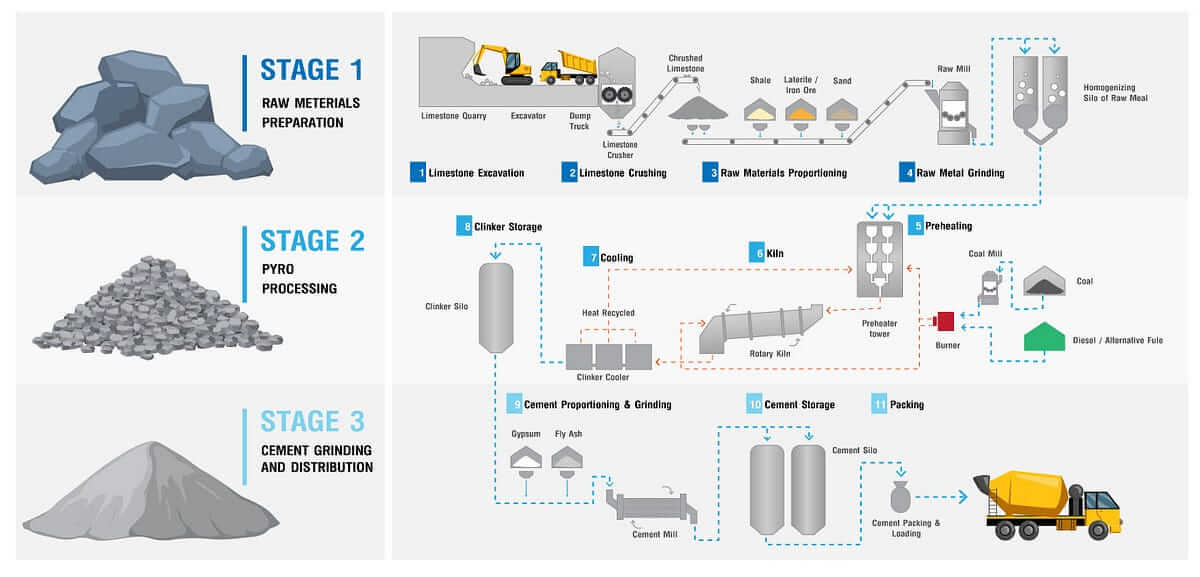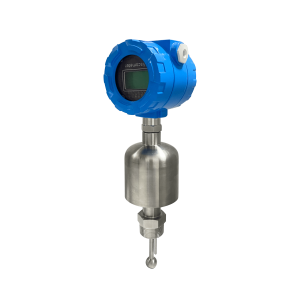Asphalt viscosity and temperature matter in production of Hot Mix Asphalt (HMA). The asphalt-cement viscosity specifies resistance to compaction of paving mixture, being meaningful in blending control system to improve reliability and efficiency.

I. Hot Mix Asphalt Process
What is Hot Mix Asphalt?
Hot mix asphalt (HMA) is produced by heating and mixing aggregates and asphalt cement. The process involves drying and heating the aggregates, then coating them with asphalt cement at a mixing plant in typical. Both aggregate and asphalt are ought to be heated before mixing. It’s the derivation of the term “hot mix”.
Then all aggregates and asphalt are heated and mixed in a mixing facility in proportion. The emphasis shifts to mastering key parameters like asphalt mixing temperature, density viscosity in mixing, which directly influences flow characteristics and bonding strength, ensuring that every batch emerging meets the rigorous demands of paving applications. The next step comes to hot mix transportation to the destination like paving site, and spread with a paving machine.
Significance of Viscosity in Asphalt Performance
Viscosity is not merely a technical metric but the heartbeat of asphalt's functionality, dictating its ease of handling during mixing. It determines the ability to withstand deformation over time, and its contribution to the overall robustness of paved surfaces.
When viscosity strays away from targeted points, the repercussions cascade through the entire link: inconsistent mixtures lead to weakened pavements prone to cracking and premature failure, escalating repair expenses and disrupting traffic flows in ways that seasoned professionals strive to avoid through vigilant monitoring. By prioritizing asphalt viscosity measurement, we empower ourselves to craft materials that excel in workability and longevity, transforming potential vulnerabilities into strengths that enhance structural performance and economic viability.
Indispensable Inline Viscosity Measurement
Continuous asphalt mixing plants have long grappled with the shortcomings of conventional offline testing methods, where delays in lab analysis and questions about sample accuracy often undermine the accuracy of results.
Real-time inline approaches revolutionizes this drawback, offering instantaneous insights that streamline the asphalt mixing process, bolster quality assurance, and drive down operational costs by enabling proactive adjustments rather than reactive fixes.

II. Fundamentals of Viscosity in Asphalt Materials
Navigating the nuances between "asphalt" and "bitumen" reveals asphalt as the broader term encompassing mixtures used in paving, while bitumen refers specifically to the binder component, yet both hinge on viscosity as a fundamental property shaping their behavior under diverse conditions.
Definition and Properties of Asphalt Viscosity
Asphalt viscosity indicates its inherent opposition to deformation when subjected to shear forces, a characteristic that profoundly alters with thermal variations, manifesting Newtonian traits at elevated temperatures where flow remains consistent, yet shifting toward non-Newtonian complexities in cooler states or with modified formulations in hot mix asphalt paving.
Practitioners well-versed in the field appreciate how this temperature-sensitive nature demands sophisticated approaches to how to determine viscosity of bitumen, ensuring that measurements capture the fluid's dynamic response across the operational stresses encountered in real-world applications.
Viscosity Standards and Specifications
ASTM and EN provides a reliable framework for evaluating asphalt's flow properties, with these benchmarks serving as gateways to consistent performance across global projects. Linking viscosity directly to grading systems like Performance Grade (PG) allows experts to predict and tailor material behavior, fostering innovations that align with specific climatic and loading demands.
Impact of Viscosity on Mixing Process
The interplay between viscosity and aggregate in blending influences the uniformity of coating, the evenness of distribution, and the overall energy required to achieve a cohesive mix.
Identifying and maintaining critical viscosity thresholds—typically ranging from 100 to 500 centipoise at mixing temperatures—ensures that the hot mix asphalt process yields products primed for efficient placement and long-term resilience.
III. Inline Viscosity Measurement
Importing of Lonnmeter Inline Asphalt Viscometer
The Lonnmeter Inline Asphalt Viscometer emerges as a robust solution tailored for the demanding environment of asphalt production, harnessing vibrational principles to deliver precise, continuous assessments without interrupting flow.
Its operational mechanism relies on detecting shifts in resonant frequency as a probe vibrates within the asphalt stream, translating these variations into accurate viscosity readings that withstand the rigors of high-temperature operations up to 450°C and pressures that mimic real plant conditions.
Real-Time Data Acquisition and Transmission
The inline asphalt viscometer within pipes, storage tanks, and asphalt plant mixers facilitates seamless capture of viscosity data, with advanced signal processing algorithms converting raw vibrational inputs into actionable metrics displayed instantaneously on control interfaces.
The inherent advantages of this system—minimal upkeep requirements and resilience in extreme heat—position it as an indispensable tool for professionals seeking to elevate their oversight of the asphalt mixing process, ensuring that every adjustment is informed and effective.
V. Integration into Asphalt Mixing Systems
Placement of Asphalt Viscometers in the Mixing Process
Those meters should be positioned in asphalt storage tanks to monitor binder stability or along feed lines leading into mixers for pre-blend verification, maximizes their utility while mitigating risks from mechanical disturbances like pump vibrations or abrupt thermal shifts. Operators can harness uninterrupted data streams that reflect true process conditions.
Data Integration with Process Control Systems
Combine viscosity data to Programmable Logic Controllers (PLC) and Supervisory Control and Data Acquisition (SCADA) platforms, forming a unified ecosystem where real-time insights drive automated responses, such as modulating additive flows or fine-tuning temperatures to sustain desired properties. This interconnected approach not only amplifies precision but also empowers teams to respond swiftly to deviations.
Automation and Adaptive Control
Through sophisticated algorithms that dynamically adjust heating elements in response to viscosity feedback, the system minimizes variability, allowing for a hands-off operation that curtails human errors and enhances consistency across batches. As we integrate these adaptive mechanisms, the reduction in manual oversight translates to safer, more predictable outcomes, compelling evidence for why forward-looking facilities are prioritizing such innovations.
VI. Overcome Challenges in Inline Viscosity Measurement
Environmental Factors
The robust design and fully-capsuled structure of a inline asphalt viscometer is sufficient to withstand extreme conditions, including temperatures soaring between 150 and 200°C alongside corrosive asphalt vapors. Contaminants like stray aggregates, airborne dust, or unintended moisture ingress pose threats to measurement accuracy.
Asphalt Variability
Divers asphalt formulations — from polymer-enhanced variants that boost elasticity to recycled or warm-mix options aimed at sustainability— requires viscometers versatile enough to adapt without recalibration, addressing sensitivities that could otherwise skew readings.
- Raw material fluctuations from crude oil sources often introduce non-homogeneity, making periodic lab tests insufficient for capturing real-time variations.
- Aging effects during storage and transport alter properties, necessitating continuous monitoring to apply corrective measures promptly.
- Harsh operational environments with temperature swings and vibrations challenge sensor stability, yet vibrational designs excel by remaining insensitive to flow rates.
VII. Applications
Quality Control in Road Construction
Inline measurements safeguard against subpar batches, drastically cutting rejection rates and bolstering project timelines.
- Real-time adjustments during production automate blending, minimizing post-process corrections and material waste.
- Prevention of property degradation in transit ensures homogeneity at the paving site, enhancing compaction reliability.
- Correlation with rutting resistance tests, such as Multiple Stress Creep Recovery (MSCR), aligns outputs with AASHTO guidelines for superior outcomes.
Energy Efficiency Optimization
Acquired real-time viscosity data enables heating input adjustment to curtail unnecessary fuel use, fostering a leaner operation that aligns with environmental imperatives and cost-saving goals. In an era where sustainability drives decisions, this optimization reduces emissions while preserving quality.
- Big data analytics from accumulated measurements enable predictive maintenance, boosting equipment longevity and throughput.
- Integration supports circular innovations, allowing agility in handling new asphalt variants with tailored formulations.
- Zero-emission measurement processes contribute to greener practices, appealing to eco-conscious stakeholders.
The transformative potential of inline viscosity measurement becomes in asphalt mixing process, elevating quality control and operational efficiency to levels that redefine industry benchmarks. Order the inline viscometer to unlock pathways to sustainable and efficient asphalt production.
Post time: Aug-20-2025











